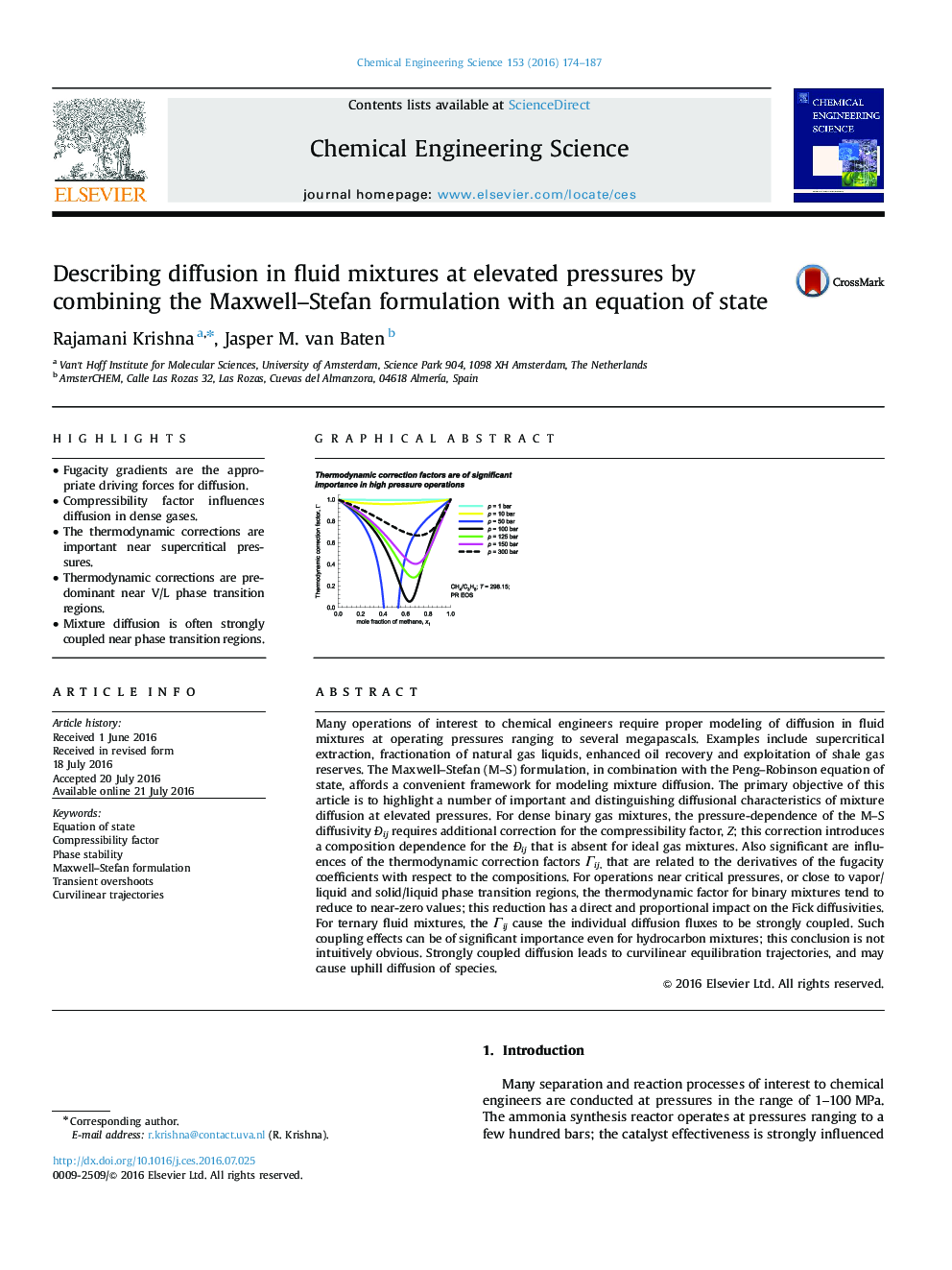| کد مقاله | کد نشریه | سال انتشار | مقاله انگلیسی | نسخه تمام متن |
|---|---|---|---|---|
| 154345 | 456830 | 2016 | 14 صفحه PDF | دانلود رایگان |

• Fugacity gradients are the appropriate driving forces for diffusion.
• Compressibility factor influences diffusion in dense gases.
• The thermodynamic corrections are important near supercritical pressures.
• Thermodynamic corrections are predominant near V/L phase transition regions.
• Mixture diffusion is often strongly coupled near phase transition regions.
Many operations of interest to chemical engineers require proper modeling of diffusion in fluid mixtures at operating pressures ranging to several megapascals. Examples include supercritical extraction, fractionation of natural gas liquids, enhanced oil recovery and exploitation of shale gas reserves. The Maxwell–Stefan (M–S) formulation, in combination with the Peng–Robinson equation of state, affords a convenient framework for modeling mixture diffusion. The primary objective of this article is to highlight a number of important and distinguishing diffusional characteristics of mixture diffusion at elevated pressures. For dense binary gas mixtures, the pressure-dependence of the M–S diffusivity Ðij requires additional correction for the compressibility factor, Z; this correction introduces a composition dependence for the Ðij that is absent for ideal gas mixtures. Also significant are influences of the thermodynamic correction factors Γij, that are related to the derivatives of the fugacity coefficients with respect to the compositions. For operations near critical pressures, or close to vapor/liquid and solid/liquid phase transition regions, the thermodynamic factor for binary mixtures tend to reduce to near-zero values; this reduction has a direct and proportional impact on the Fick diffusivities. For ternary fluid mixtures, the Γij cause the individual diffusion fluxes to be strongly coupled. Such coupling effects can be of significant importance even for hydrocarbon mixtures; this conclusion is not intuitively obvious. Strongly coupled diffusion leads to curvilinear equilibration trajectories, and may cause uphill diffusion of species.
Figure optionsDownload high-quality image (219 K)Download as PowerPoint slide
Journal: Chemical Engineering Science - Volume 153, 22 October 2016, Pages 174–187